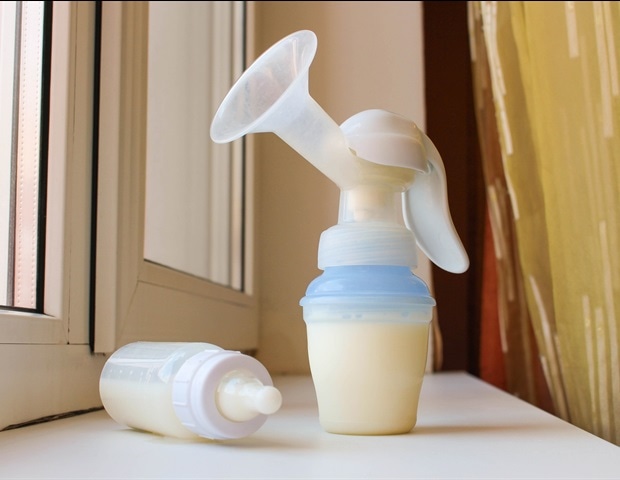Often called the “golden hour,” the first 60 minutes after birth are a crucial bonding time for a mother and her baby. Unless there is a medical emergency or the mother or baby is unstable, medical providers should delay all procedures and interventions until after the newborn’s first feeding or at least one hour after delivery.1
However, there are some procedures and interventions recommended very soon after birth. As a NICU nurse, one of the first interventions we perform when new babies arrive at the unit is “eyes and thighs.” The “eyes” refers to erythromycin eye ointment, and “thighs” refers to a shot of vitamin K in the thigh. Erythromycin eye ointment is routinely given to newborns after birth to prevent and treat bacterial infections.
What is Erythromycin Eye Ointment?
Erythromycin is a macrolide antibiotic for treating certain bacterial infections such as strep, gonorrhea, chlamydia, and HiB. This type of antibiotic works by stopping the growth of bacteria.2,3
Erythromycin ointment is a topical formulation of this antibiotic, meaning that instead of being administered through the mouth, vein, or muscle, we apply it to the eye’s mucous membrane, and the body absorbs it that way. It provides localized treatment to protect the eyes from bacterial harm.4
Topical erythromycin eye ointment can prevent a condition in newborn babies called ophthalmia neonatorum.
What is Ophthalmia Neonatorum?
Ophthalmia neonatorum is when a baby gets conjunctivitis or pink eye within the first month of life. Pink eye in newborns is commonly due to the Neisseria gonorrhoeae bacterium, which causes sexually transmitted gonorrhea infection.5
Gonorrhea in women typically does not cause any symptoms, so a pregnant mother may not even know she is infected and, therefore, would not know to seek treatment. If a mother has untreated gonorrhea, her baby has a 30-50% chance of catching it from her during birth, called vertical transmission. Babies who contract gonorrhea from their mothers during delivery will develop ophthalmia neonatorum.5,6
Ophthalmia neonatorum causes symptoms such as eye redness, profuse discharge, severe swelling of the eyelids, corneal scarring, ocular perforation, and blindness. Symptoms can begin as soon as 24 hours after infection and typically within 2-5 days. One eye may be worse than the other, but commonly both eyes are affected. Neonatal pink eye progresses rapidly and can cause permanent damage to the eyes.5,7,8,9
If left untreated, ophthalmia neonatorum can progress to systemic disease, causing symptoms such as sepsis and arthritis.10
Although gonorrhea is the most common cause of ophthalmia neonatorum, other bacteria and pathogens can also cause this condition. For instance, chlamydia is becoming another common cause of neonatal pink eye. Erythromycin does not prevent or treat other causes of this condition as effectively as it treats the gonorrheal cause of pink eye.7,11
When Will the Ointment Be Applied?
Since symptoms of neonatal pink eye can begin as soon as 24 hours after birth, doctors or nurses should apply erythromycin ointment as soon as possible after birth. The CDC recommends administration within the first 2-3 hours of life, but many hospitals aim for even sooner.9,10
The baby must not be moved from the mother’s chest to administer erythromycin. Ointment administration should not interrupt the golden hour.
Ingredients in Erythromycin Eye Ointment
The ingredients in the ointment include:14
- Erythromycin. 0.5%
- Mineral oil. A liquid obtained from petroleum. The Environmental Working Group rates this product as having a low risk for cancer and developmental and reproductive toxicity, and a moderate risk for allergy and immunotoxicity, especially if inhaled. The mineral oil in erythromycin eye ointment is applied topically with little chance of inhalation.12
- White petrolatum. A semisolid mixture obtained from petroleum. The Environmental Working Group rates this product as low risk for cancer, allergies, immunotoxicity, and developmental and reproductive toxicity.13
Side Effects and Risks
Erythromycin eye ointment is generally considered safe. Some experts suspect that erythromycin ointment administration causes temporary blurry vision for the newborn that may impair bonding by affecting eye contact between the infant and parents. The ointment can cause the appearance of cloudy eyes, and it can also cause eye redness, swelling, and irritation.15
Rarely can an allergic reaction to erythromycin eye ointment occur. If it does, an allergic reaction causes eye discharge in the first few weeks. However, it is infrequent for a baby to have an allergic reaction to their first exposure to an antibiotic.16
Another potential side effect of the erythromycin eye ointment is antibiotic resistance. This occurs when bacteria adapt to survive treatment. This makes antibiotics less effective over time and explains why we shouldn’t use them when they are unnecessary. It is unknown whether gonorrhea has developed resistance to erythromycin, but the U.S. Preventative Services Task Force has identified this as an important area for further research.5
Who Should Get Erythromycin Eye Ointment?
The American Academy of Family Physicians recommends all newborns receive erythromycin eye ointment to prevent gonorrheal neonatal pink eye. Because many women with gonorrhea have no symptoms and some women either don’t receive prenatal care or have poor care, the AAFP believes erythromycin eye ointment is a safe and simple way to prevent the severe consequences of ophthalmia neonatorum, including blindness.17
Is the Ointment Mandatory?
Erythromycin eye ointment is the standard of care in the United States. Most states mandate its use, and your provider or pediatrician should know your state’s laws and the policies at the hospital where you plan to deliver. If you want to decline treatment with erythromycin eye ointment, you may have to sign a waiver stating that you understand the risks.5
Alternatives to Erythromycin Eye Ointment
Since gonorrhea is the most common cause of ophthalmia neonatorum, a potential alternative to universal prophylaxis would be screening all pregnant women for gonorrhea and treating the mother, if infected, before delivery. Currently, experts recommend screening for gonorrhea for pregnant women under 25 and pregnant women at high risk for gonorrheal infection. However, not all pregnant women receive prenatal care, and those who don’t may have asymptomatic gonorrhea that gets passed to their babies during delivery.5,18
Other alternatives, such as povidone-iodine, silver nitrate, and tetracycline antibiotic ointment, are no longer available in the United States. An alternative antibiotic ointment called gentamicin can cause eye reactions from its administration.18
During a recent erythromycin shortage, the CDC recommended that a weight-based dose of the antibiotic ceftriaxone be administered intravenously or intramuscularly to high-risk mothers or those with no prenatal care.18
Ultimately, erythromycin eye ointment for newborns is low-risk and very effective at preventing ophthalmia neonatorum and subsequent blindness in newborns. However, if you are confident that you do not have gonorrhea, it may be an unnecessary early intervention for your baby. If you are planning to deliver in a hospital, you may not have a choice of whether your baby is given this medicine because it depends on your state.
If you have questions or concerns, it is always best to talk to your medical provider or pediatrician but going into these conversations with some background is helpful. By learning the purpose, ingredients, side effects, and alternatives of erythromycin eye ointment, you are one step closer to making an informed health decision for your new little one.

 PARENTING TIPS
PARENTING TIPS







 PREGNANCY
PREGNANCY








 BABY CARE
BABY CARE








 TODDLERS
TODDLERS








 TEENS
TEENS








 HEALTH CARE
HEALTH CARE







 ACTIVITIES & CRAFTS
ACTIVITIES & CRAFTS








 CONTACT
CONTACT ABOUT
ABOUT



